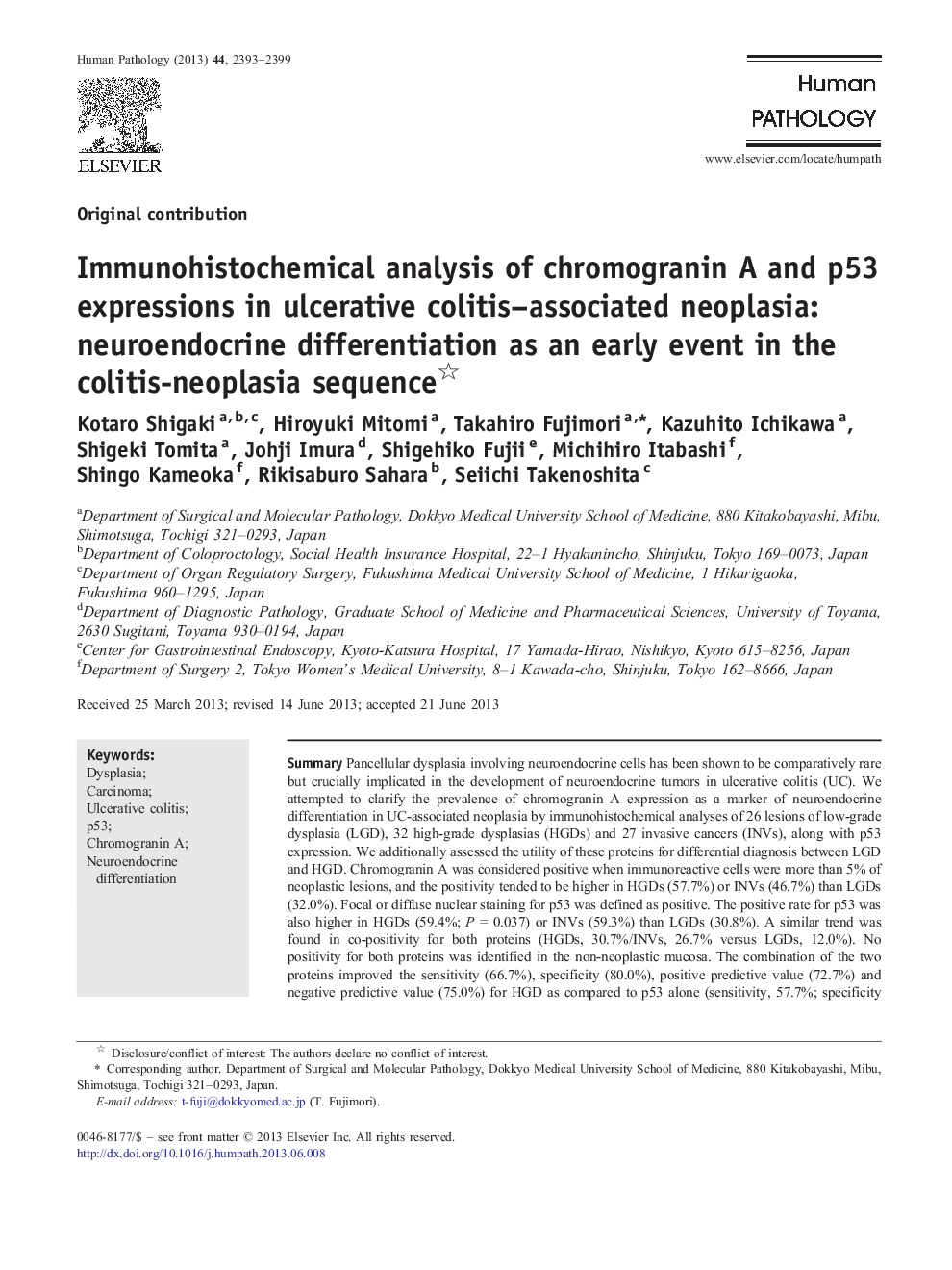| Article ID | Journal | Published Year | Pages | File Type |
|---|---|---|---|---|
| 6215624 | Human Pathology | 2013 | 7 Pages |
SummaryPancellular dysplasia involving neuroendocrine cells has been shown to be comparatively rare but crucially implicated in the development of neuroendocrine tumors in ulcerative colitis (UC). We attempted to clarify the prevalence of chromogranin A expression as a marker of neuroendocrine differentiation in UC-associated neoplasia by immunohistochemical analyses of 26 lesions of low-grade dysplasia (LGD), 32 high-grade dysplasias (HGDs) and 27 invasive cancers (INVs), along with p53 expression. We additionally assessed the utility of these proteins for differential diagnosis between LGD and HGD. Chromogranin A was considered positive when immunoreactive cells were more than 5% of neoplastic lesions, and the positivity tended to be higher in HGDs (57.7%) or INVs (46.7%) than LGDs (32.0%). Focal or diffuse nuclear staining for p53 was defined as positive. The positive rate for p53 was also higher in HGDs (59.4%; P = 0.037) or INVs (59.3%) than LGDs (30.8%). A similar trend was found in co-positivity for both proteins (HGDs, 30.7%/INVs, 26.7% versus LGDs, 12.0%). No positivity for both proteins was identified in the non-neoplastic mucosa. The combination of the two proteins improved the sensitivity (66.7%), specificity (80.0%), positive predictive value (72.7%) and negative predictive value (75.0%) for HGD as compared to p53 alone (sensitivity, 57.7%; specificity 68.0%; positive predictive value, 65.2%; negative predictive value, 60.7%). In conclusion, we show here that neuroendocrine differentiation is relatively common and represents an early event in the UC-neoplasia pathway in which p53 and chromogranin A are coordinately up-regulated. Immunohistochemical assessment of their expression might provide a useful adjunct tool for grading dysplasia in UC.
